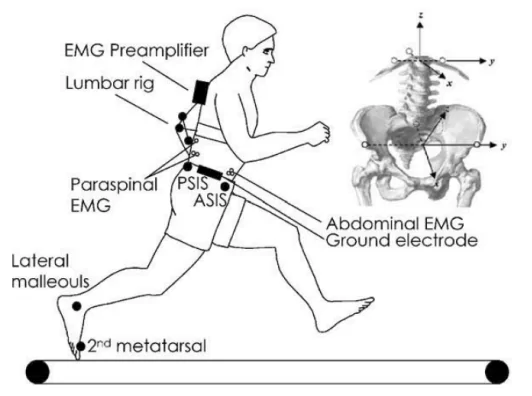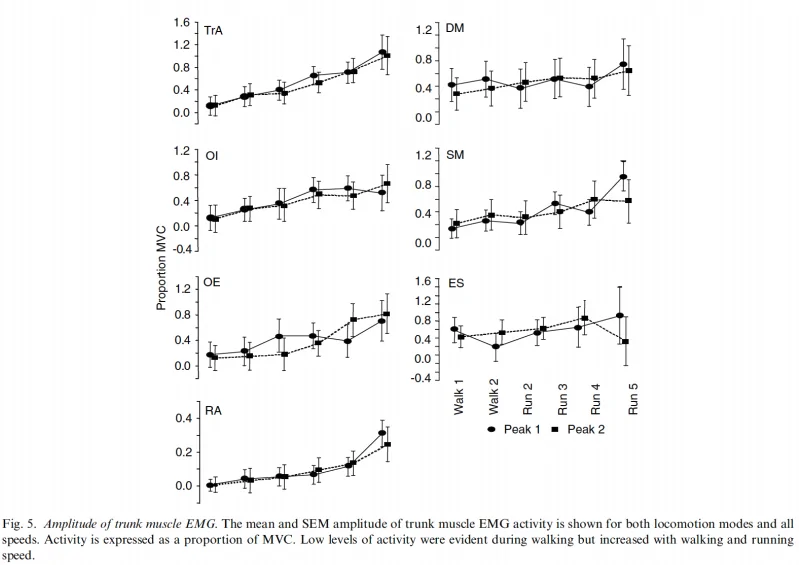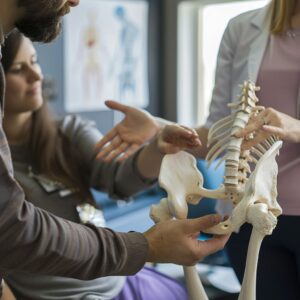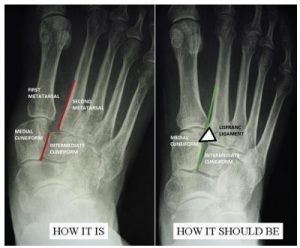Journal Article
Article in Clinical Biomechanics 20(8):784-93 · November 2005
Authors
Steven W. Saunders, Anthony Schache, David Rath, Paul W. Hodges
Abstract
Control of the trunk is critical for locomotor efficiency. However, investigations of trunk muscle activity and three-dimensional lumbo-pelvic kinematics during walking and running remain scarce. Gait parameters and three-dimensional lumbo-pelvic kinematics were recorded in seven subjects. Electromyography recordings of abdominal and paraspinal muscles were made using fine-wire and surface electrodes as subjects walked on a treadmill at 1 and 2 ms(-1) and ran at 2, 3, 4 and 5 ms(-1). Kinematic data indicate that the amplitude but not timing of lumbo-pelvic motion changes with locomotor speed. Conversely, a change in locomotor mode is associated with temporal but not spatial adaptation in neuromotor strategy. That is, peak transverse plane lumbo-pelvic rotation occurs at foot strike during walking but prior to foot strike during running. Despite this temporal change, there is a strong correlation between the amplitude of transverse plane lumbo-pelvic rotation and stride length during walking and running. In addition, lumbo-pelvic motion was asymmetrical during all locomotor tasks. Trunk muscle electromyography occurred biphasically in association with foot strike. Transversus abdominis was tonically active with biphasic modulation. Consistent with the kinematic data, electromyography activity of the abdominal muscles and the superficial fibres of multifidus increased with locomotor speed, and timing of peak activity of superficial multifidus and obliquus externus abdominis was modified in association with the temporal adaptation in lumbo-pelvic motion with changes in locomotor mode. These data provide evidence of the association between lumbo-pelvic motion and trunk muscle activity during locomotion at different speeds and modes.







